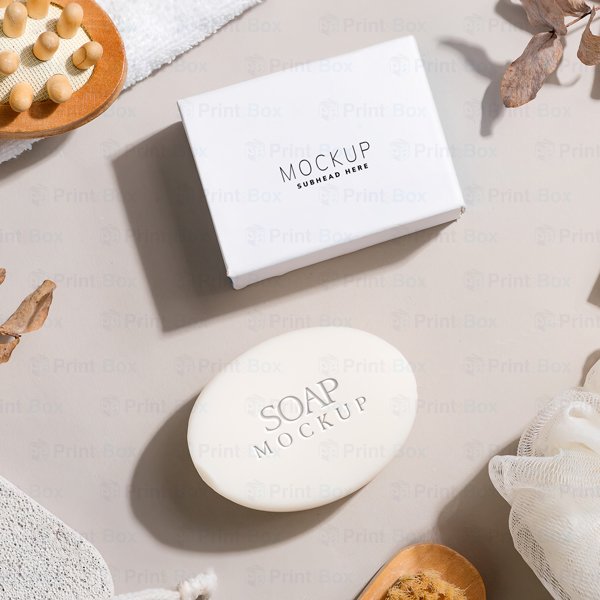Discover the power of packaging design in creating a lasting brand impression. Explore how...
Innovative Packaging Solutions: Redefining the Industry
Discover how innovative packaging solutions are revolutionizing the industry and providing new opportunities for businesses.
The Evolution of Packaging: From Basic to Innovative Solutions
Packaging has come a long way from its basic beginnings. In the past, packaging was primarily used to protect products during transportation and storage. However, with the advancements in technology and changing consumer demands, packaging has evolved into much more than just a means of protection. It has become a powerful tool for branding, marketing, and enhancing the overall customer experience.
Innovative packaging solutions have emerged as a result of this evolution. These solutions go beyond the traditional cardboard boxes and plastic wraps. They incorporate unique designs, materials, and functionalities to create a memorable and engaging packaging experience for consumers. From creative shapes and vibrant colors to interactive elements and smart features, innovative packaging solutions are redefining the way products are presented and perceived.
One of the key drivers of innovation in packaging solutions is the growing emphasis on sustainability. With the increasing awareness about environmental issues, businesses are now exploring eco-friendly alternatives to traditional packaging materials. Recyclable, biodegradable, and compostable packaging solutions are gaining popularity as they reduce waste and carbon footprint. Sustainable packaging not only appeals to environmentally-conscious consumers but also helps businesses meet their corporate social responsibility goals.
Another advantage of innovative packaging solutions is their ability to improve product safety and convenience. Advanced packaging technologies, such as tamper-evident seals, child-resistant closures, and easy-to-open features, ensure that products reach consumers in their intended condition. Additionally, smart packaging solutions, equipped with sensors and tracking devices, enable real-time monitoring of product quality, freshness, and temperature. This not only enhances customer trust but also reduces the risk of spoilage and product recalls.
Innovative packaging solutions also play a crucial role in enhancing brand recognition and differentiation. With fierce competition in the market, businesses need to stand out from the crowd and leave a lasting impression on consumers. Unique packaging designs and eye-catching visuals can capture attention and create a memorable brand image. Interactive packaging elements, such as QR codes, augmented reality experiences, and personalized messages, can further engage consumers and foster brand loyalty.
Looking ahead, technology will continue to drive innovation in packaging solutions. Advancements in materials science, printing techniques, and automation will enable the development of even more creative and functional packaging designs. Smart packaging, powered by Internet of Things (IoT) technology, will enable personalized product experiences, real-time tracking, and interactive engagement. As consumer expectations evolve, packaging solutions will need to adapt and embrace new technologies to meet their needs.
In conclusion, innovative packaging solutions are transforming the packaging industry and providing exciting opportunities for businesses. From sustainable materials to advanced functionalities, these solutions are revolutionizing the way products are packaged, presented, and experienced. As technology continues to advance, the future of packaging looks promising, with endless possibilities for creating unique and memorable consumer experiences.
Advantages of Innovative Packaging Solutions
Innovative packaging solutions offer several advantages for businesses. Firstly, they help create a unique brand identity and differentiate products from competitors. Eye-catching designs, vibrant colors, and interactive elements can capture consumers' attention and leave a lasting impression. This can significantly boost brand recognition and customer loyalty.
Secondly, innovative packaging solutions can enhance product safety and convenience. Tamper-evident seals, child-resistant closures, and easy-to-open features ensure that products reach consumers in their intended condition. Smart packaging with sensors and tracking devices enables real-time monitoring of product quality, freshness, and temperature, reducing the risk of spoilage and product recalls.
Furthermore, sustainable packaging solutions contribute to a greener future. By using recyclable, biodegradable, and compostable materials, businesses can reduce waste and minimize their environmental impact. Sustainable packaging not only appeals to environmentally-conscious consumers but also aligns with corporate social responsibility goals.
Lastly, innovative packaging solutions provide opportunities for creative marketing and branding. QR codes, augmented reality experiences, and personalized messages can be integrated into packaging to engage consumers and create personalized product experiences. This can help businesses build a strong connection with their target audience and drive customer loyalty.
In summary, innovative packaging solutions offer numerous advantages for businesses, including brand differentiation, product safety, sustainability, and creative marketing opportunities. By embracing these solutions, businesses can stay ahead of the competition, attract and retain customers, and contribute to a more sustainable future.
Sustainable Packaging Solutions: A Step Towards a Greener Future
Sustainable packaging solutions are gaining momentum as businesses and consumers become increasingly aware of the environmental impact of packaging waste. These solutions aim to minimize the use of non-renewable resources, reduce waste generation, and promote recycling and composting.
One of the key components of sustainable packaging is the use of eco-friendly materials. Biodegradable plastics, plant-based polymers, and recycled paper are examples of sustainable packaging materials that can be used as alternatives to traditional plastics and non-recyclable materials. These materials are designed to break down naturally over time, reducing their impact on the environment.
In addition to using sustainable materials, sustainable packaging solutions also focus on optimizing packaging design and functionality. This includes reducing the amount of packaging used, eliminating unnecessary components, and designing packaging that is easy to recycle or compost. By adopting such practices, businesses can significantly reduce their carbon footprint and contribute to a greener future.
Sustainable packaging solutions offer several benefits for businesses. Firstly, they appeal to environmentally-conscious consumers who prefer products with minimal environmental impact. By using sustainable packaging, businesses can attract and retain these consumers, thereby expanding their customer base.
Secondly, sustainable packaging solutions help businesses meet their corporate social responsibility goals. With increasing pressure from stakeholders to adopt sustainable practices, businesses that prioritize eco-friendly packaging demonstrate their commitment to environmental sustainability and gain a competitive edge.
Lastly, sustainable packaging solutions can lead to cost savings for businesses. By reducing packaging materials, optimizing packaging design, and streamlining the packaging process, businesses can minimize packaging waste and associated costs. Additionally, sustainable packaging materials are often more cost-effective in the long run, as they can be recycled or composted, reducing the need for new packaging materials.
In conclusion, sustainable packaging solutions are a step towards a greener future. By using eco-friendly materials, optimizing packaging design, and promoting recycling and composting, businesses can reduce their environmental impact and meet consumer demand for sustainable products. Embracing sustainable packaging not only benefits the environment but also offers advantages for businesses, including attracting environmentally-conscious consumers, meeting corporate social responsibility goals, and achieving cost savings.
Innovations in Packaging Design and Functionality
Innovations in packaging design and functionality have revolutionized the way products are packaged, presented, and experienced. These innovations go beyond the traditional cardboard boxes and plastic wraps, incorporating unique designs, materials, and functionalities to create a memorable and engaging packaging experience for consumers.
One of the key innovations in packaging design is the use of creative shapes and vibrant colors. Unconventional packaging shapes, such as custom-designed containers and pouches, can capture consumers' attention and create a sense of excitement. Vibrant colors and eye-catching visuals further enhance the visual appeal of packaging, making products stand out on store shelves.
Another innovation in packaging design is the integration of interactive elements. QR codes, augmented reality experiences, and personalized messages can be incorporated into packaging to engage consumers and provide them with additional information or entertainment. This interactive packaging not only enhances the overall customer experience but also enables businesses to collect valuable data and insights about consumer preferences and behavior.
In terms of functionality, innovative packaging solutions offer several advancements. Tamper-evident seals, child-resistant closures, and easy-to-open features ensure that products reach consumers in their intended condition. Smart packaging, equipped with sensors and tracking devices, enables real-time monitoring of product quality, freshness, and temperature. This not only enhances customer trust but also reduces the risk of spoilage and product recalls.
Furthermore, packaging innovations have also focused on sustainability. Recyclable, biodegradable, and compostable packaging materials are gaining popularity as businesses strive to reduce waste and minimize their environmental impact. These sustainable packaging solutions not only appeal to environmentally-conscious consumers but also help businesses meet their corporate social responsibility goals.
In conclusion, innovations in packaging design and functionality have transformed the packaging industry. Creative shapes, vibrant colors, and interactive elements capture consumers' attention and create a memorable brand experience. Advanced functionalities, such as tamper-evident seals and smart packaging, ensure product safety and quality. Sustainable packaging solutions contribute to a greener future. By embracing these innovations, businesses can enhance their brand image, engage consumers, and stay ahead of the competition.
Future Outlook: The Role of Technology in Packaging Solutions
Technology will play a crucial role in shaping the future of packaging solutions. Advancements in materials science, printing techniques, and automation will enable the development of even more creative and functional packaging designs.
One of the key areas of innovation will be in materials science. Researchers are exploring new materials that are not only sustainable but also offer enhanced functionalities. For example, self-healing materials could be used to create packaging that repairs itself when damaged, increasing the lifespan of packaging and reducing waste. Additionally, materials that change color or texture in response to environmental conditions could provide valuable information about product freshness and quality.
Printing techniques will also continue to evolve, allowing for more intricate and personalized packaging designs. Digital printing technologies enable businesses to create custom packaging with variable data, such as personalized messages or individualized graphics. This customization can enhance the overall customer experience and create a stronger connection between the brand and the consumer.
Automation will revolutionize the packaging process, making it more efficient and cost-effective. Robotic packaging systems can handle complex tasks, such as product sorting, labeling, and packaging, with speed and precision. This not only reduces the risk of human error but also increases productivity and reduces labor costs. Additionally, automation can enable real-time monitoring of the packaging process, ensuring quality control and minimizing waste.
Smart packaging, powered by Internet of Things (IoT) technology, will become more prevalent in the future. Smart packaging can interact with consumers, provide product information, and even reorder products when they are running low. It can also enable real-time tracking of products, ensuring timely delivery and reducing the risk of lost or stolen packages. As technology continues to advance, smart packaging will offer new opportunities for businesses to engage consumers and streamline the supply chain.
In conclusion, the future of packaging solutions looks promising with technology driving innovation. Advancements in materials science, printing techniques, automation, and smart packaging will enable the development of even more creative, functional, and sustainable packaging designs. Businesses that embrace these technologies will be able to deliver unique and personalized product experiences, streamline their operations, and stay ahead in an increasingly competitive market.


